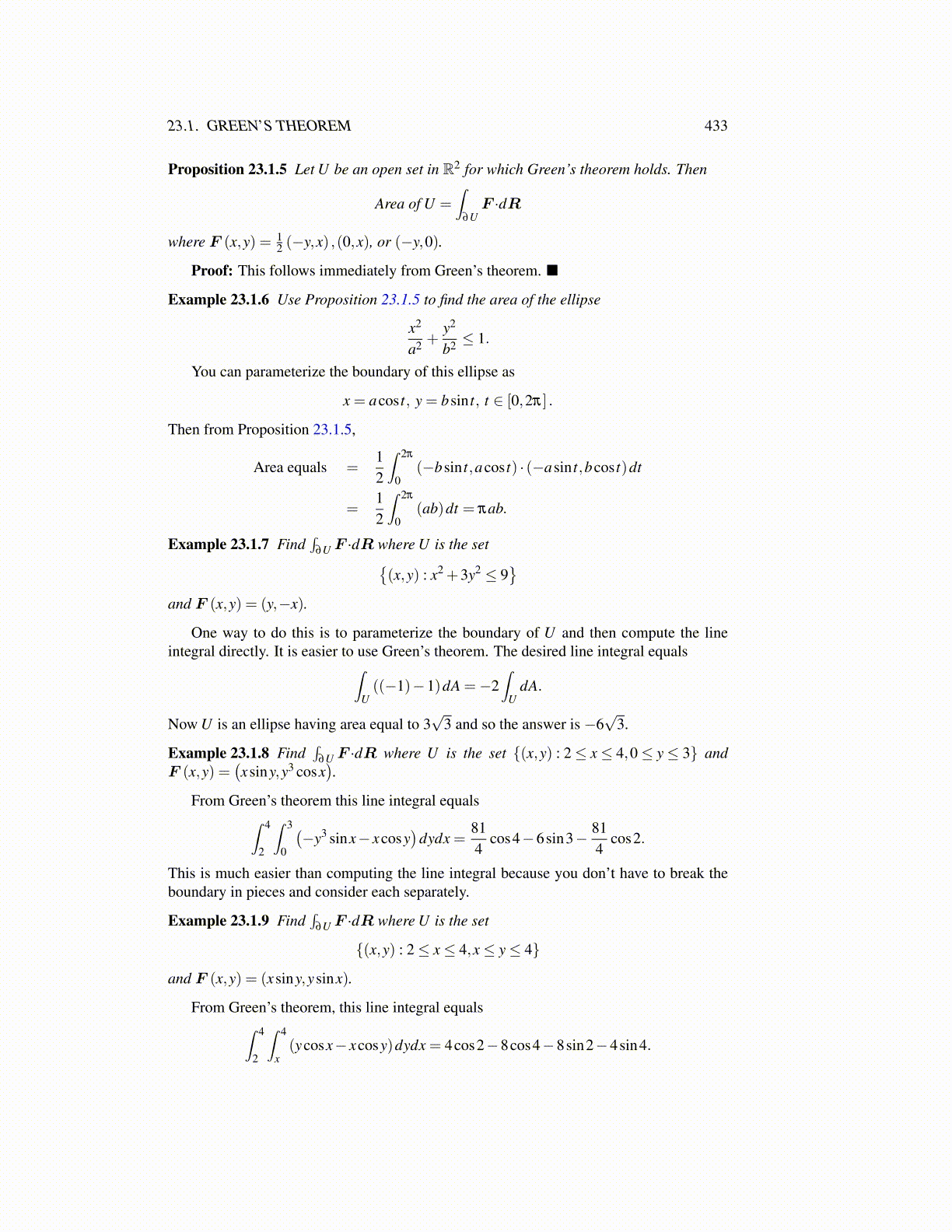
23.1. GREEN’S THEOREM 433
Proposition 23.1.5 Let U be an open set in R2 for which Green’s theorem holds. Then
Area of U =∫
∂UF ·dR
where F (x,y) = 12 (−y,x) ,(0,x), or (−y,0).
Proof: This follows immediately from Green’s theorem. ■
Example 23.1.6 Use Proposition 23.1.5 to find the area of the ellipse
x2
a2 +y2
b2 ≤ 1.
You can parameterize the boundary of this ellipse as
x = acos t, y = bsin t, t ∈ [0,2π] .
Then from Proposition 23.1.5,
Area equals =12
∫ 2π
0(−bsin t,acos t) · (−asin t,bcos t)dt
=12
∫ 2π
0(ab)dt = πab.
Example 23.1.7 Find∫
∂U F ·dR where U is the set{(x,y) : x2 +3y2 ≤ 9
}and F (x,y) = (y,−x).
One way to do this is to parameterize the boundary of U and then compute the lineintegral directly. It is easier to use Green’s theorem. The desired line integral equals∫
U((−1)−1)dA =−2
∫U
dA.
Now U is an ellipse having area equal to 3√
3 and so the answer is −6√
3.
Example 23.1.8 Find∫
∂U F ·dR where U is the set {(x,y) : 2≤ x≤ 4,0≤ y≤ 3} andF (x,y) =
(xsiny,y3 cosx
).
From Green’s theorem this line integral equals∫ 4
2
∫ 3
0
(−y3 sinx− xcosy
)dydx =
814
cos4−6sin3− 814
cos2.
This is much easier than computing the line integral because you don’t have to break theboundary in pieces and consider each separately.
Example 23.1.9 Find∫
∂U F ·dR where U is the set
{(x,y) : 2≤ x≤ 4,x≤ y≤ 4}
and F (x,y) = (xsiny,ysinx).
From Green’s theorem, this line integral equals∫ 4
2
∫ 4
x(ycosx− xcosy)dydx = 4cos2−8cos4−8sin2−4sin4.